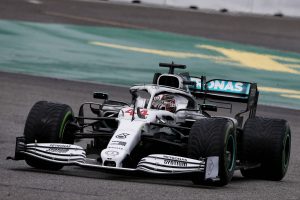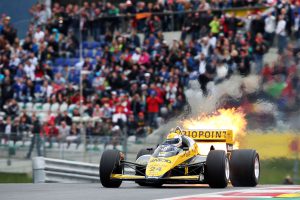Halfway through the Turkish Grand Prix, there was obviously going to be a sensational first-time winner and a leftfield podium.
Lance Stroll was in control, with only his Racing Point team-mate Sergio Perez and Red Bull’s under-pressure Alex Albon looking like they might catch him.
It was going to be a result mad enough to reflect the craziness of a weekend of zero grip, endless incidents and upsets, and wild weather.
Lewis Hamilton? Off the pace all weekend and struggling to get past Sebastian Vettel’s Ferrari for fourth even though Albon had recently done so with ease.
Yet at the chequered flag, Hamilton was once again imperious, Albon and Stroll were nowhere and only Perez and Vettel’s presence on the podium suggested anything odd was going on.
A supreme win for Hamilton and an appropriate win to clinch his record-equalling Formula 1 title. But for the neutral, perhaps a little sadness that there hadn’t been another wild result to match Monza.
And the 2020 Turkish GP was far from the only time when an F1 race seemed to have all the ingredients for a crazy result, only to end up being won by someone ‘normal’.
Here’s our pick of some of the others:
1995 BELGIAN GRAND PRIX
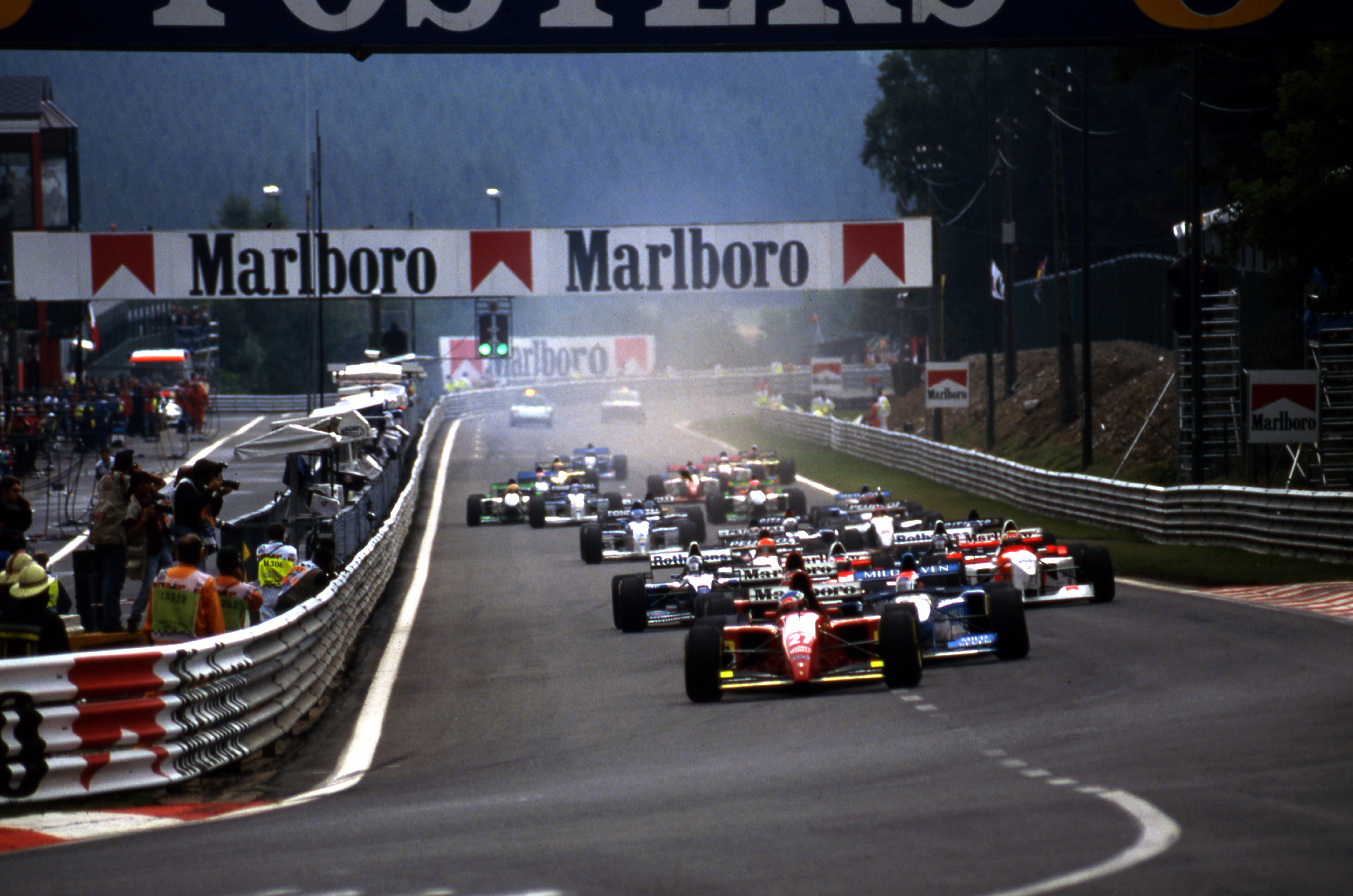 Championship leader Michael Schumacher 16th on the grid, main rival Damon Hill eighth after two days of changeable weather at Spa. A Ferrari team with just two attrition-aided wins since 1990 filling the front row with Gerhard Berger and Jean Alesi, Mika Hakkinen for the rarely-competitive McLaren team and Schumacher’s downtrodden Benetton team-mate Johnny Herbert behind them. More rain on the way…
Championship leader Michael Schumacher 16th on the grid, main rival Damon Hill eighth after two days of changeable weather at Spa. A Ferrari team with just two attrition-aided wins since 1990 filling the front row with Gerhard Berger and Jean Alesi, Mika Hakkinen for the rarely-competitive McLaren team and Schumacher’s downtrodden Benetton team-mate Johnny Herbert behind them. More rain on the way…
It should’ve been a mad one, and in its opening laps it really was, as Jean Alesi, Herbert and David Coulthard produced an epic lead-swapping dice that Hakkinen quickly spun out of.
But two spins for Herbert and mechanical problems for Coulthard and both Ferraris opened the door for usual suspects Hill and Schumacher to rapidly advance to the front.
Once they were there, they had one of their best and most contentious battles, with Schumacher winning from row eight and a disgruntled Hill having to scrap past Martin Brundle’s Ligier for second after a penalty, a spin and tyre choice miscues.
A legendary grand prix and victory, but not the crazy result the grid promised.
2002 AUSTRALIAN GP
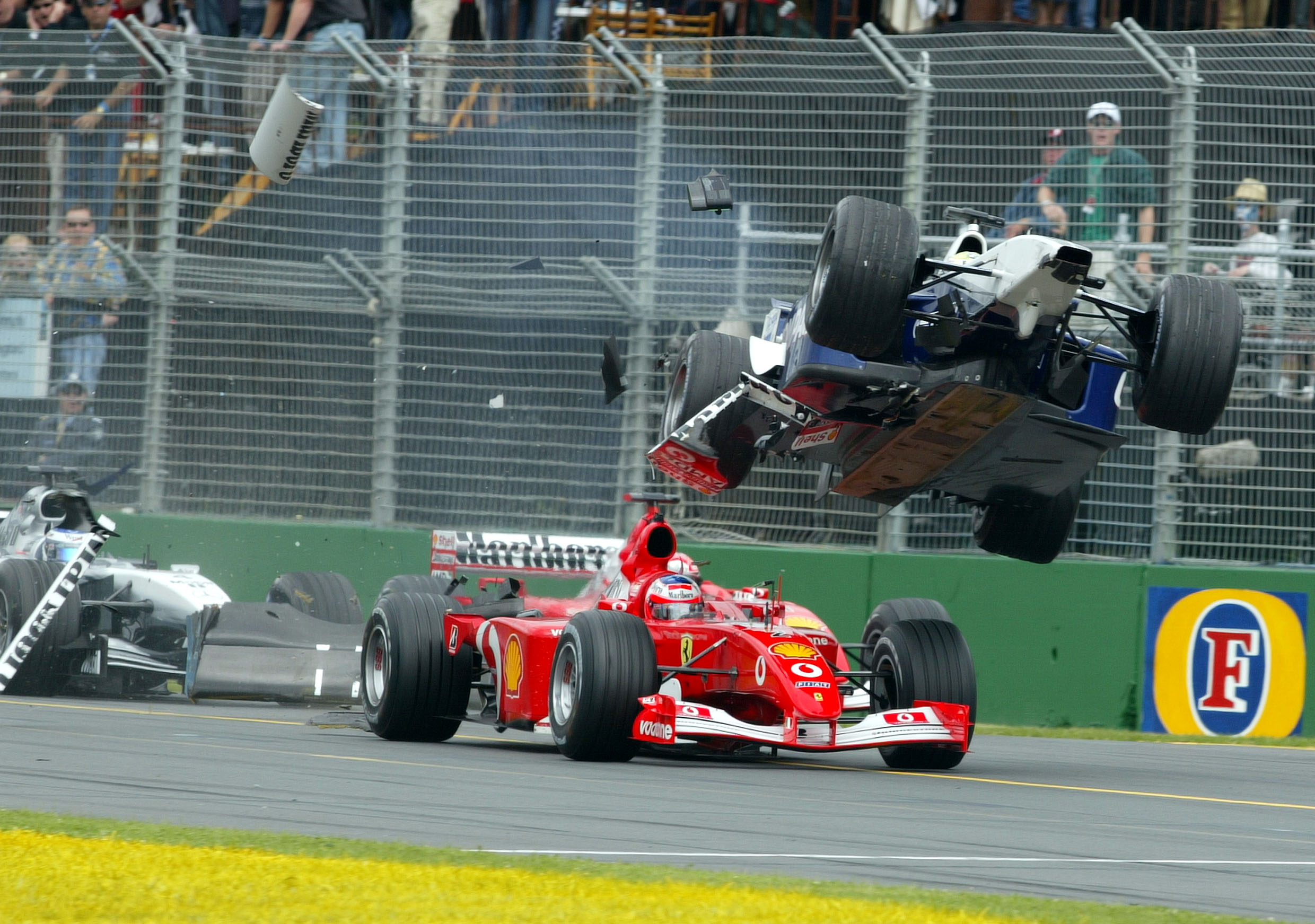 The routine all-Ferrari front row – albeit with Rubens Barrichello on pole ahead of Schumacher – was wiped out when Ralf Schumacher used Barrichello as a launchpad into Turn 1, triggering a series of shunts that eliminated eight of the 20 cars and dropped Michael down to fourth.
The routine all-Ferrari front row – albeit with Rubens Barrichello on pole ahead of Schumacher – was wiped out when Ralf Schumacher used Barrichello as a launchpad into Turn 1, triggering a series of shunts that eliminated eight of the 20 cars and dropped Michael down to fourth.
With Coulthard’s McLaren, Jarno Trulli’s Renault and Juan Pablo Montoya’s Williams ahead of him, Schumacher was really going to have to work for this one…
And in fairness, he did – with Trulli proving very hard to pass and Montoya managing to reclaim the lead at one stage with typical determination.
But even though it was one of Ferrari’s harder-earned wins of 2002, it was still ultimately a race that Schumacher led from lap 17 to 58 and won by 25s. And that wasn’t as wild an outcome as appeared likely in the race’s first 20 seconds.
2005 JAPANESE GP
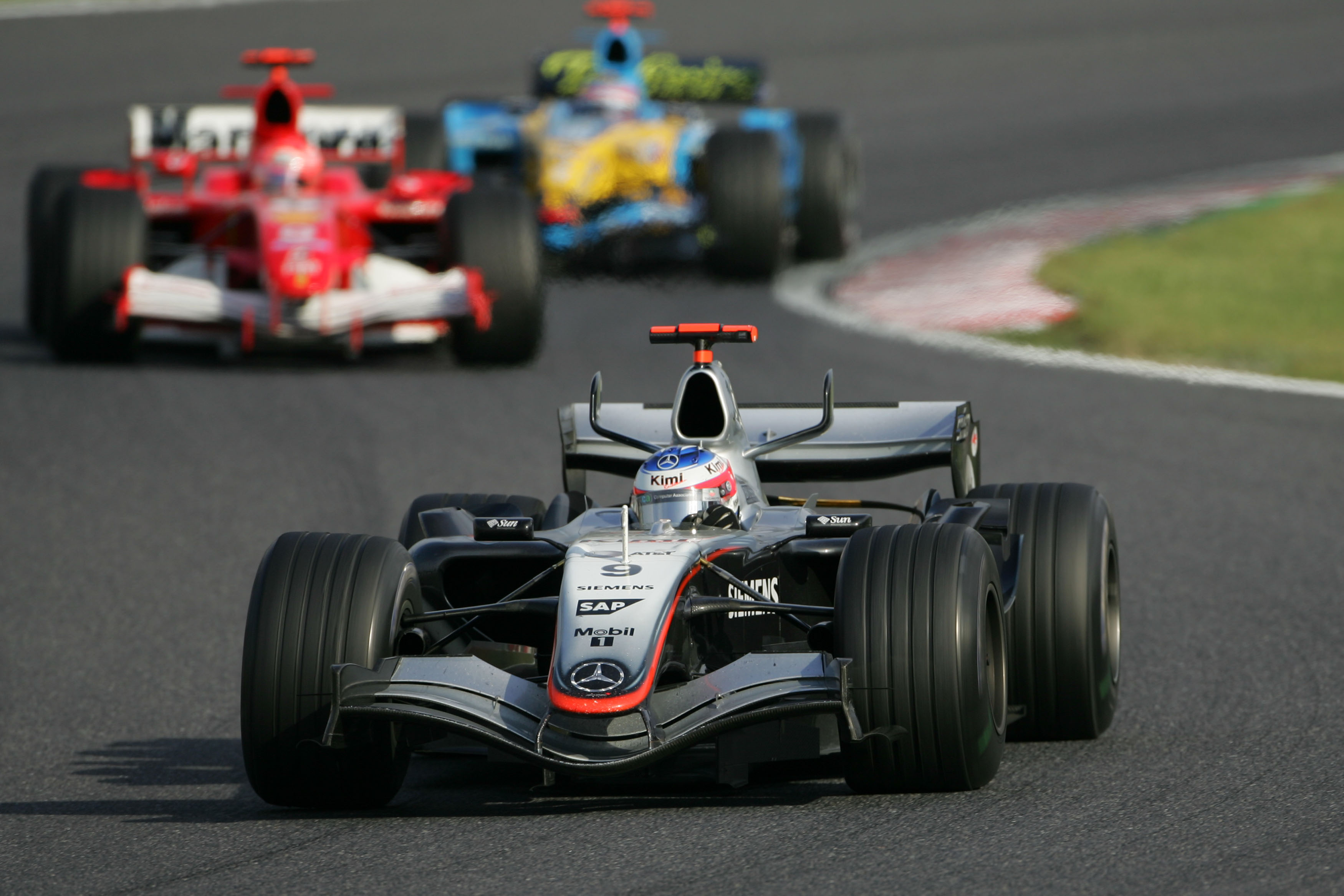 No one could be disappointed with a race in which Kimi Raikkonen came from 17th on the grid to win with a final lap round-the-outside pass.
No one could be disappointed with a race in which Kimi Raikkonen came from 17th on the grid to win with a final lap round-the-outside pass.
But given the qualifying weather meant Renault’s champion Fernando Alonso started 16th, defeated title rival Raikkonen and his McLaren team-mate Montoya 17th and 18th, fans of underdogs would’ve hoped this wouldn’t be another McLaren/Renault podium sweep.
Especially the front row comprised Ralf Schumacher’s Toyota and Jenson Button’s BAR, with Christian Klien’s Red Bull joining Giancarlo Fisichella’s Renault on row two. That meant the teams fourth, sixth and seventh in the constructors’ standings occupied three of the top four starting spots.
Yet in the end, it was a McLaren-Renault-Renault result. Raikkonen and Alonso did extraordinary things to reach first and third, though.
1981 SAN MARINO GP
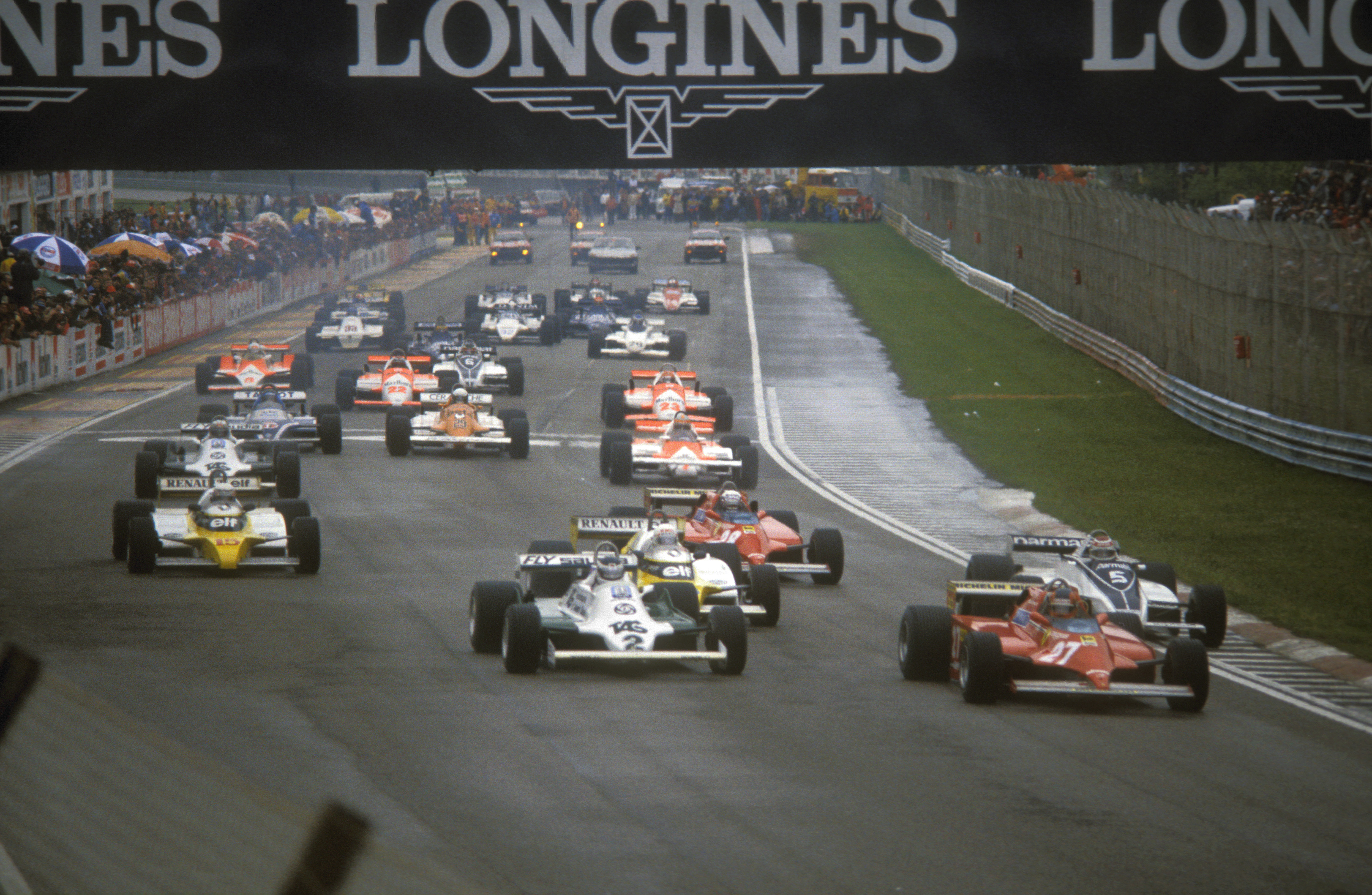 Ferrari had followed up its 1979 title with an abysmal 1980, so to be holding a 1-2 at home at Imola just four races into 1981 was definitely a shock.
Ferrari had followed up its 1979 title with an abysmal 1980, so to be holding a 1-2 at home at Imola just four races into 1981 was definitely a shock.
It was partly due to Gilles Villeneuve wrestling its powerful but unwieldy first turbocharged car onto pole, and partly due to Villeneuve and team-mate Didier Pironi capitalising on the initially wet track to take control.
And rather than 1981’s main forces Williams and Brabham challenging the Ferraris, it was Riccardo Patrese’s Arrows hassling them.
Eventual champion Nelson Piquet came through to win for Brabham, though, with Villeneuve losing the lead when he pitted very early for slicks just as more rain came, and Pironi’s car fading as it dried. Patrese kept second at least.
2001 MALAYSIAN GP
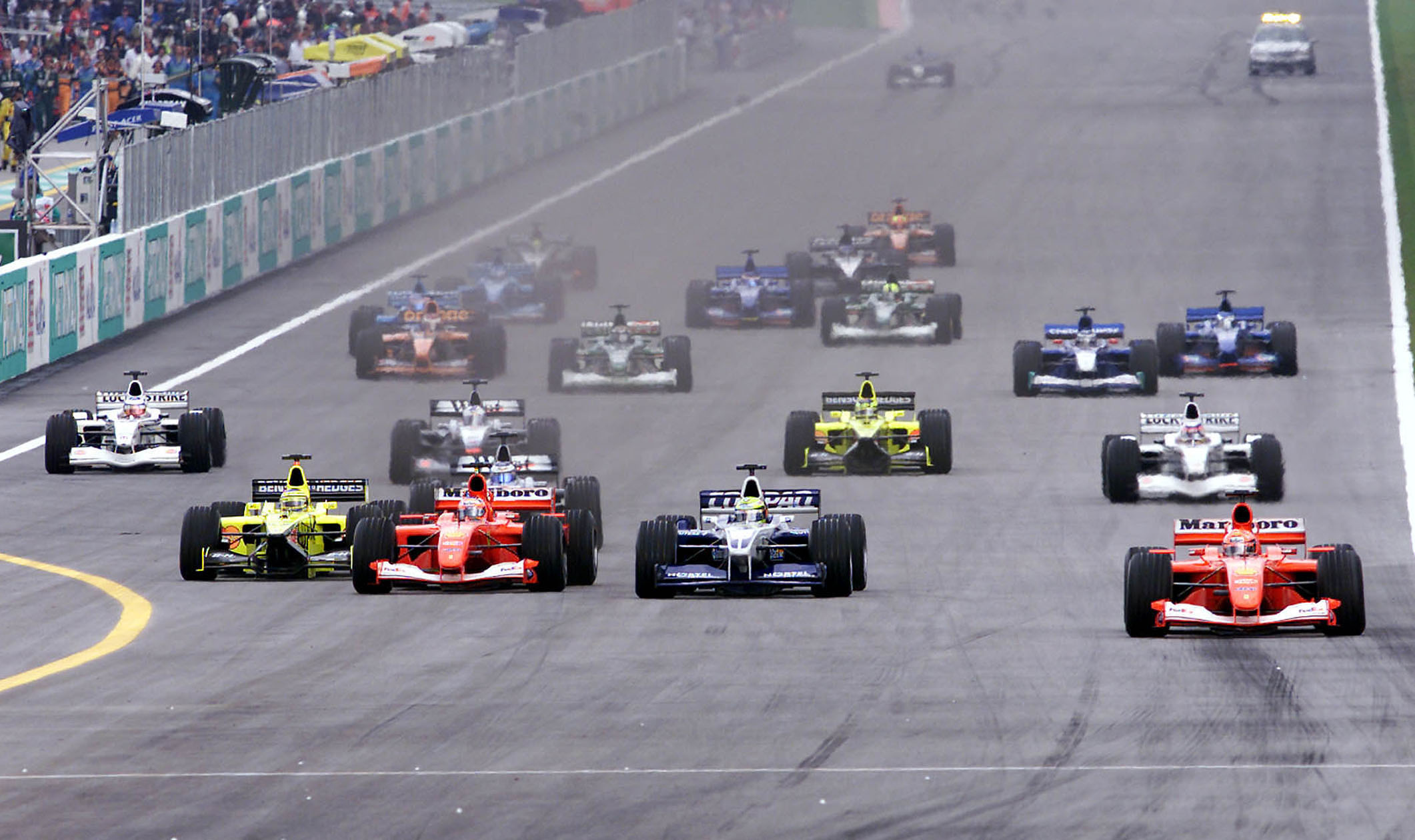 Another Ferrari domination era race that flirted with the idea of a Ferrari defeat then turned into a crushing Ferrari victory.
Another Ferrari domination era race that flirted with the idea of a Ferrari defeat then turned into a crushing Ferrari victory.
Schumacher and Barrichello plunged off the road on lap three as they hit oil from Olivier Panis’s expired BAR-Honda, putting Trulli’s Jordan into a shock lead… which didn’t last long before the Jordan was skipping sideways through a gravel trap as a massive sudden downpour hit Sepang.
Things then got worse for Ferrari as its cars sat in the pits for over a minute while the team scrambled for the right tyres and cleared debris from sidepods.
It all dropped Barrichello and Schumacher to 10th and 11th in a race now led by Coulthard’s McLaren (from eighth on the grid), Heinz-Harald Frentzen’s Jordan and most remarkably Jos Verstappen’s Arrows.
Surely there was no way Ferrari was going to win this…
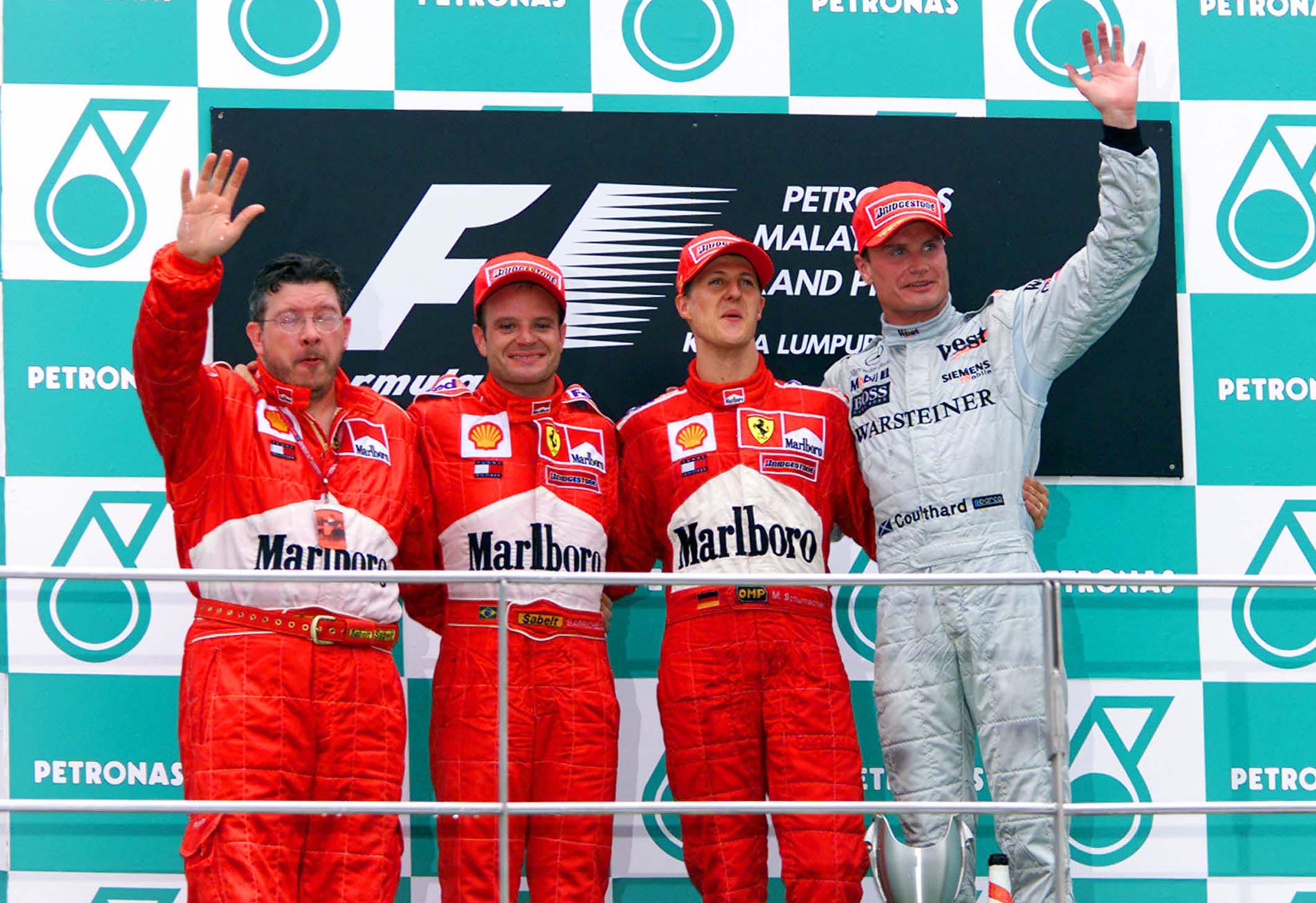
…except it had fitted intermediates during that shambolic pitstop while everyone else went for wets. Inters couldn’t have coped with the level of standing water at the time in racing conditions, but a long safety car meant most of it cleared as Sepang dried rapidly.
It took only six racing laps for Schumacher and Barrichello to come from 11th and 10th to first and second and then run away.
Verstappen’s gallant efforts to keep Arrows somewhere near the podium kept the race fun, though. Even if in the end he was pushed right outside the points.
2015 BRITISH GP
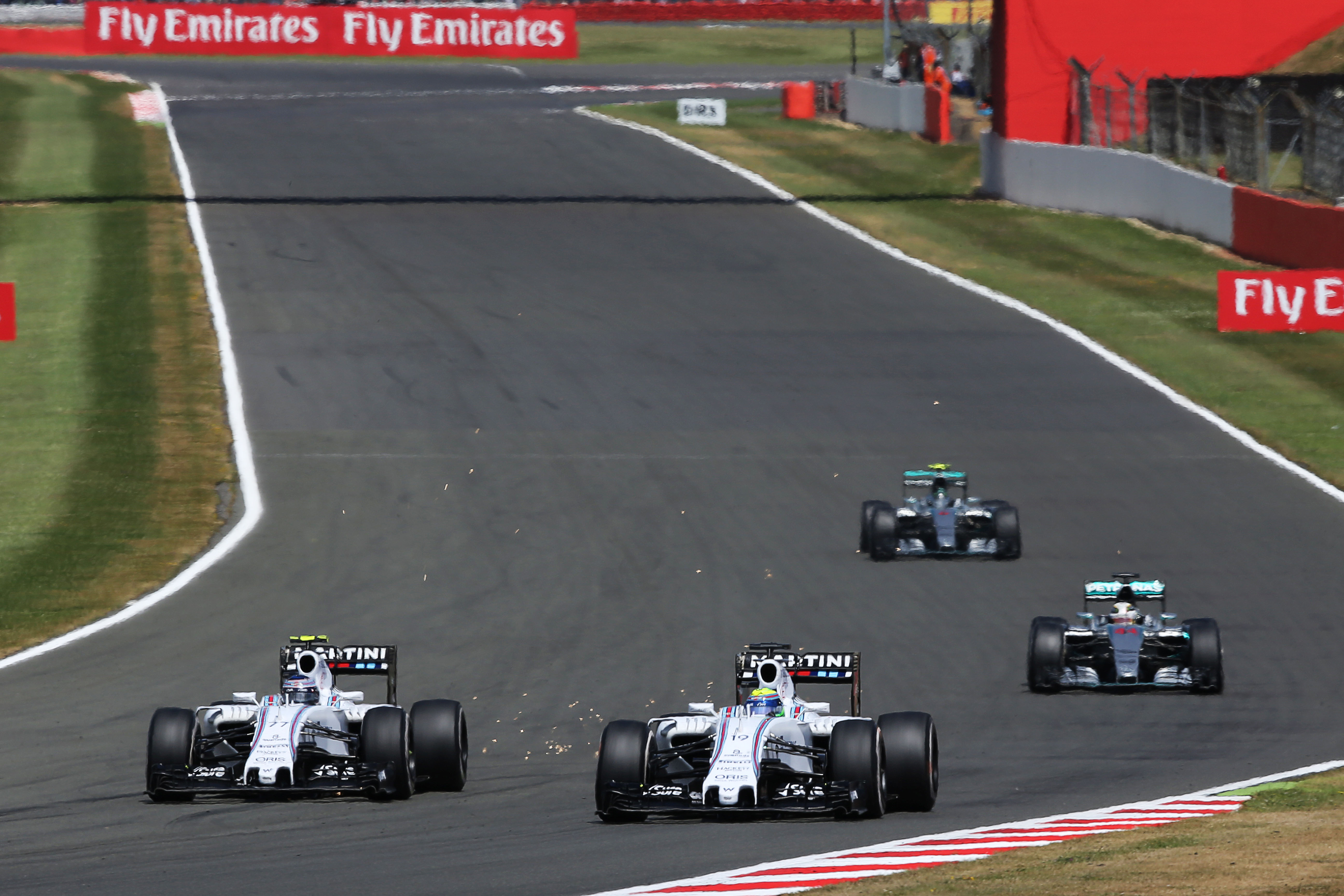 Crazy might be a stretch, but by Mercedes steamroller era standards the Williams of Felipe Massa and Valtteri Bottas bursting through to usurp front row pair Lewis Hamilton and Nico Rosberg from the lead at the start was an upset.
Crazy might be a stretch, but by Mercedes steamroller era standards the Williams of Felipe Massa and Valtteri Bottas bursting through to usurp front row pair Lewis Hamilton and Nico Rosberg from the lead at the start was an upset.
And they stayed there till the pitstops, with a little team orders angst along the way.
A mid-race rain shower created hope of more surprises as it prompted tyre choice dilemmas, but in the end those just cemented the normality of the final result as Hamilton’s lead over Rosberg grew and Sebastian Vettel’s Ferrari jumped the Williams pair for the final podium spot.
1991 BELGIAN GP
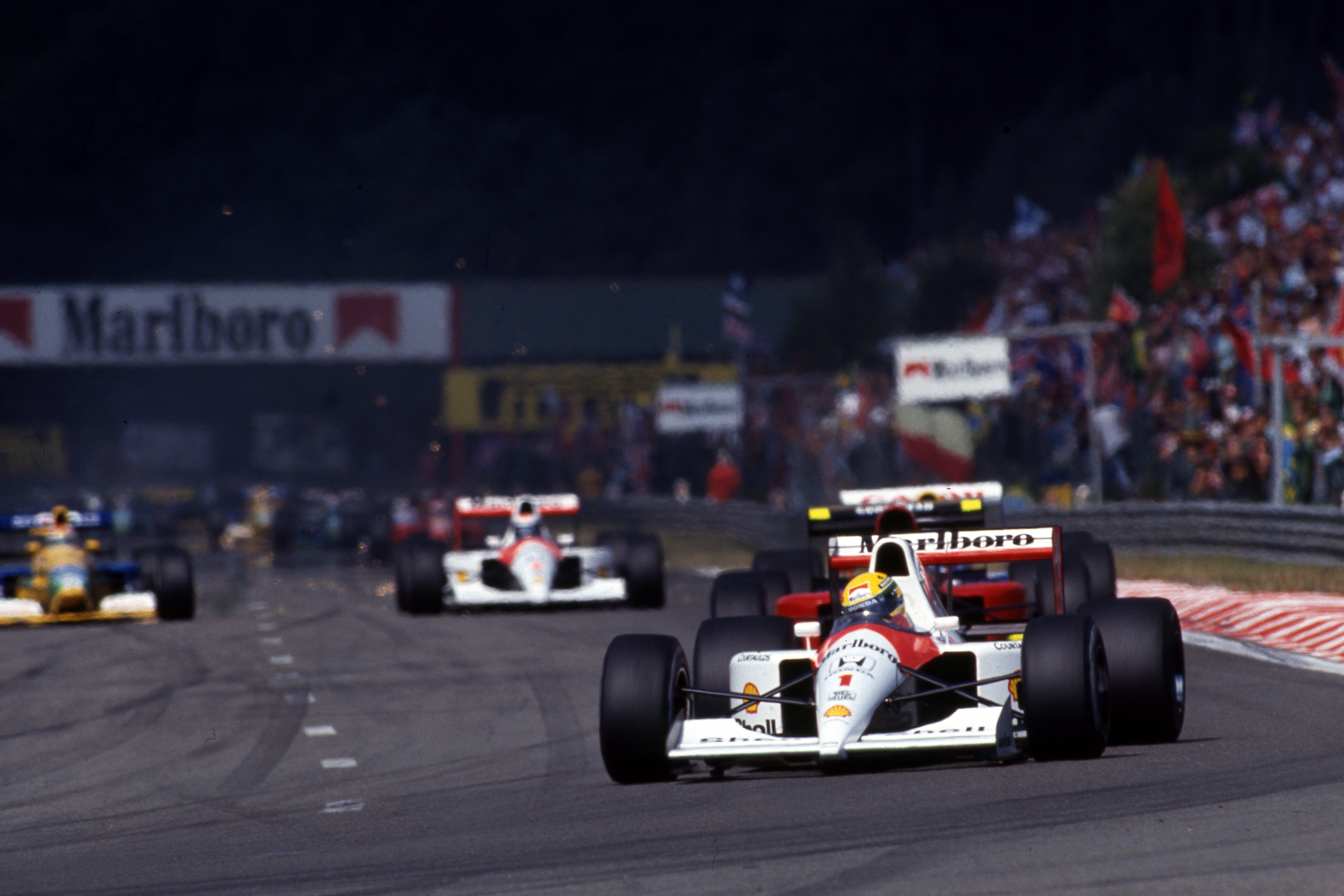 The race best known for Michael Schumacher’s amazing debut was one he played very little part in as he immediately destroyed his clutch from that startling seventh on the grid – but his Jordan team could still have won it in its first year.
The race best known for Michael Schumacher’s amazing debut was one he played very little part in as he immediately destroyed his clutch from that startling seventh on the grid – but his Jordan team could still have won it in its first year.
Champion Ayrton Senna would win, yet was grappling with gearbox problems in his McLaren throughout. With usual main rival Nigel Mansell’s Williams and Senna’s McLaren team-mate Gerhard Berger hitting early trouble too, the drivers who ended up with the best chance to beat Senna were Alesi in a generally terrible year for his Ferrari team and Andrea de Cesaris for plucky newcomer Jordan.
Engine failures for Alesi (while leading) and de Cesaris (while closing rapidly on the ailing Senna) ended the fairytales.
BONUS CATEGORY 1
QUALIFYING SESSIONS THAT TEASED
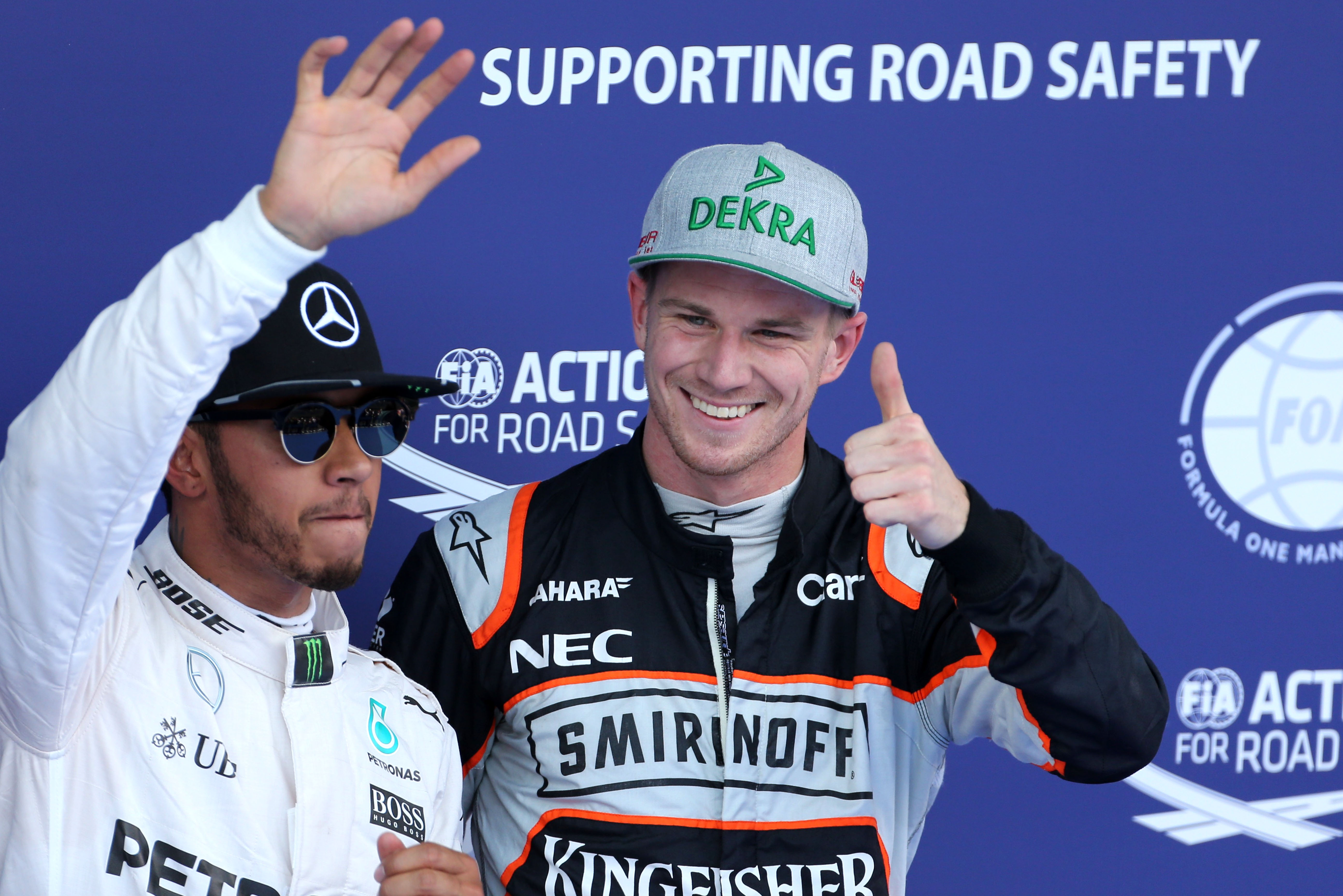 F1 has a long history of exciting grids preceding races where the formbook was rapidly restored.
F1 has a long history of exciting grids preceding races where the formbook was rapidly restored.
Austria’s unpredictable weather has made it the scene of a fair few of these, such as the 2016 qualifying session that had Nico Hulkenberg’s Force India on the front row and Button’s McLaren-Honda (in Honda’s bad days) third, albeit with Hamilton on pole.
That race was far from uneventful, with strong cameos from Vettel and Raikkonen’s Ferraris, and it was still settled with a final-lap collision over the lead, but that collision was between the Mercedes.
Austria 1998 began with Giancarlo Fisichella’s Benetton on pole ahead of Alesi’s Sauber. By the end of lap one, title rivals Hakkinen and Schumacher had put both in the shade, and Fisichella and Alesi later collided with each other.
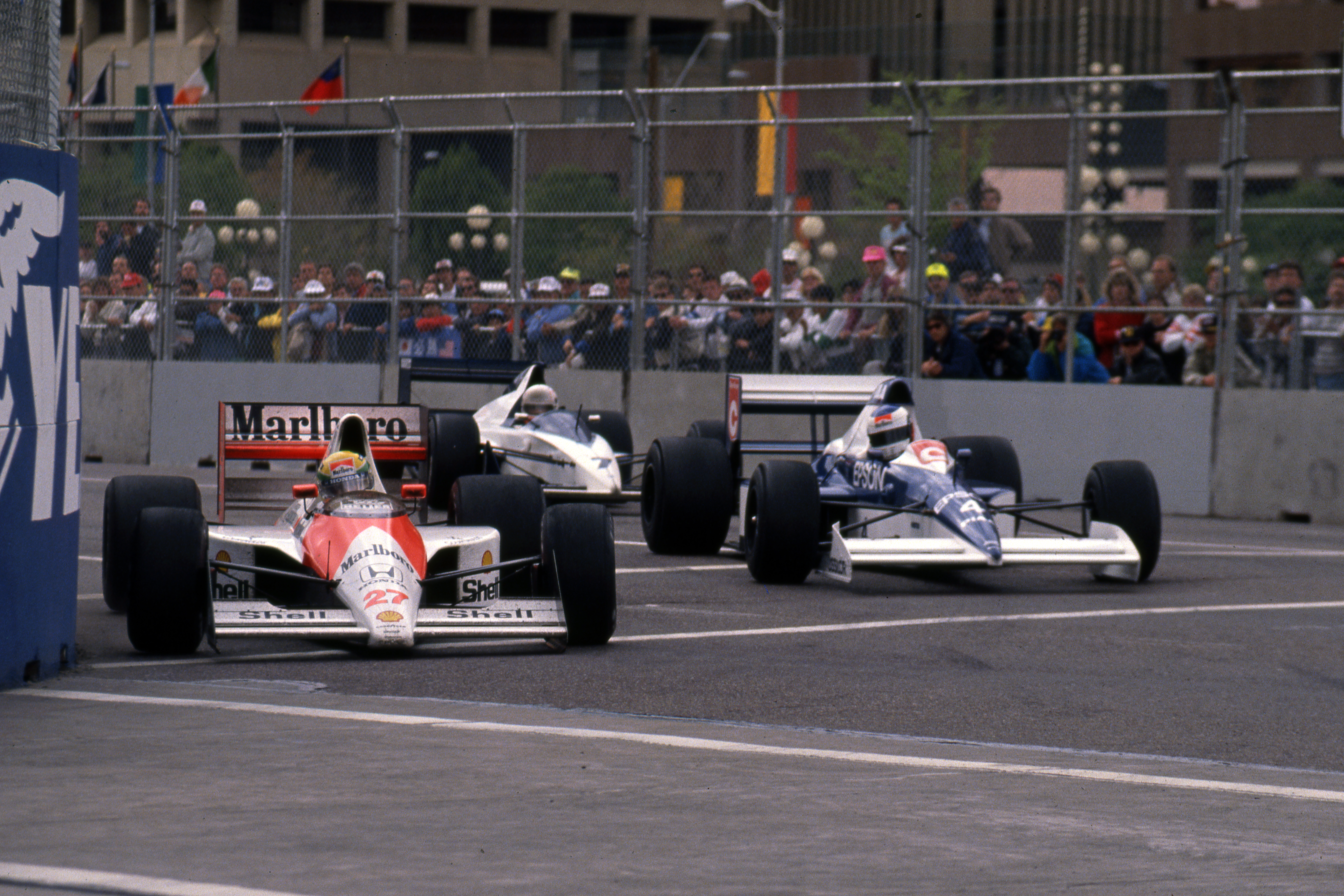
Soft Pirellis and Saturday rain thrust a load of underdogs high on the Phoenix 1990 grid, giving Minardi its famous one-off front row start with Pierluigi Martini. De Cesaris’ Dallara in third and Olivier Grouillard’s Osella in eighth were equally mad qualifying outcomes.
None stayed near the front long enough on race day to look like podium contenders, which stopped this race making our main ‘crazy’ list.
But with Berger on pole and leading on his McLaren debut before crashing, and then Alesi taking the fight for victory to Senna in his Pirelli-shod Tyrrell, there was still scope for a shock outcome before Senna took charge.
Silverstone 1988 probably fits in here too, as it began with an all-Ferrari front row for Berger and Michele Alboreto in a year when no one but McLaren had been on pole so far (and Senna had six of those seven poles). Plus it was F1’s first wet race in three years, and thus there seemed a fair chance of 1988’s first surprise.
But despite Berger’s best efforts, it wasn’t long before Senna was in front and pulling away.
BONUS CATEGORY 2
VILLENEUVE VS BRIDGESTONE’S UNDERDOGS IN 1997
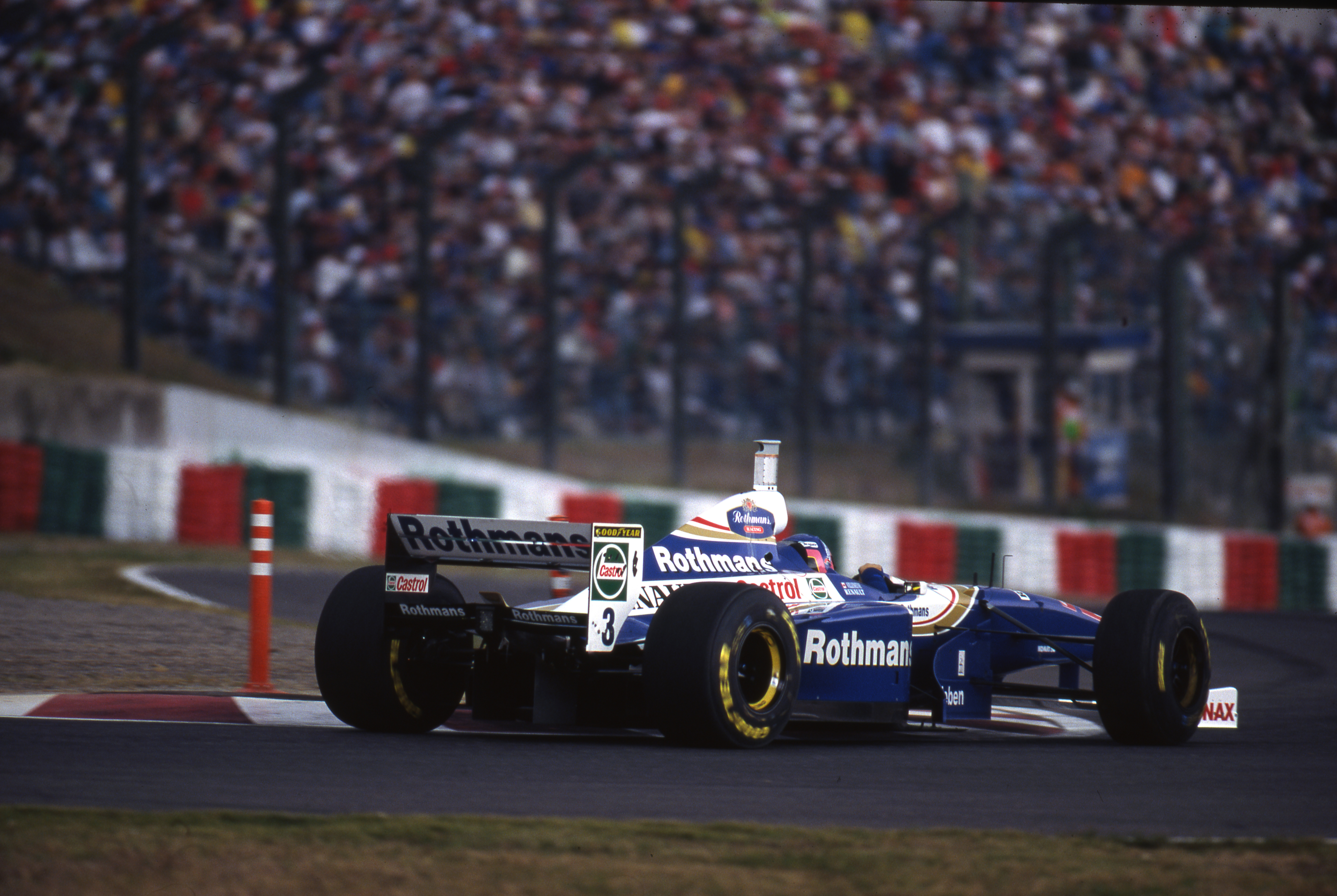 We decided none of them deserved a place in the main ‘crazy race’ list, but there was a whole host of 1997 races when the Bridgestone tyres being superior to the Goodyears but Bridgestone only having midfield teams suggested that a wild result was in prospect, and then Jacques Villeneuve still ended up winning in his Goodyear-shod Williams.
We decided none of them deserved a place in the main ‘crazy race’ list, but there was a whole host of 1997 races when the Bridgestone tyres being superior to the Goodyears but Bridgestone only having midfield teams suggested that a wild result was in prospect, and then Jacques Villeneuve still ended up winning in his Goodyear-shod Williams.
Argentina and Spain don’t quite count as Villeneuve held on from the front in races Olivier Panis would’ve won for Prost if his car hadn’t failed at Buenos Aires and he’d qualified better at Barcelona.
But the best examples are Hungary and Austria. Hill’s Arrows leaving everyone else caught in a train behind Schumacher’s tyre-gobbling Ferrari made an Hungaroring upset look certain, before the Arrows wilted at the last moment and Villeneuve nipped ahead.
And Austria was a Prost-Stewart 1-2 with the injured Panis’s rookie stand-in Trulli leading from Barrichello for 23 of its 71 laps. Villeneuve was in front once the pitstops played out, though, and Trulli eventually retired with an engine failure that dropped oil that Barrichello went off on.

